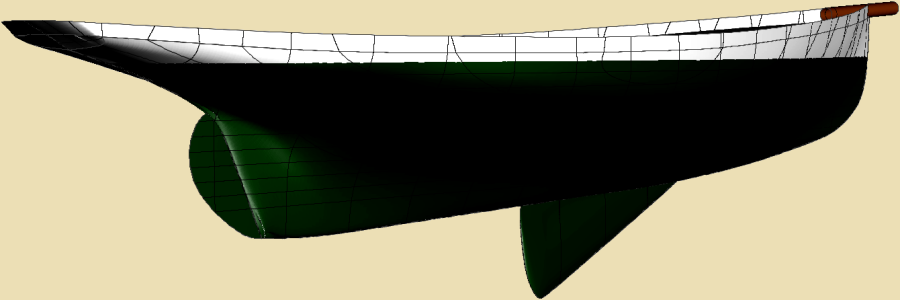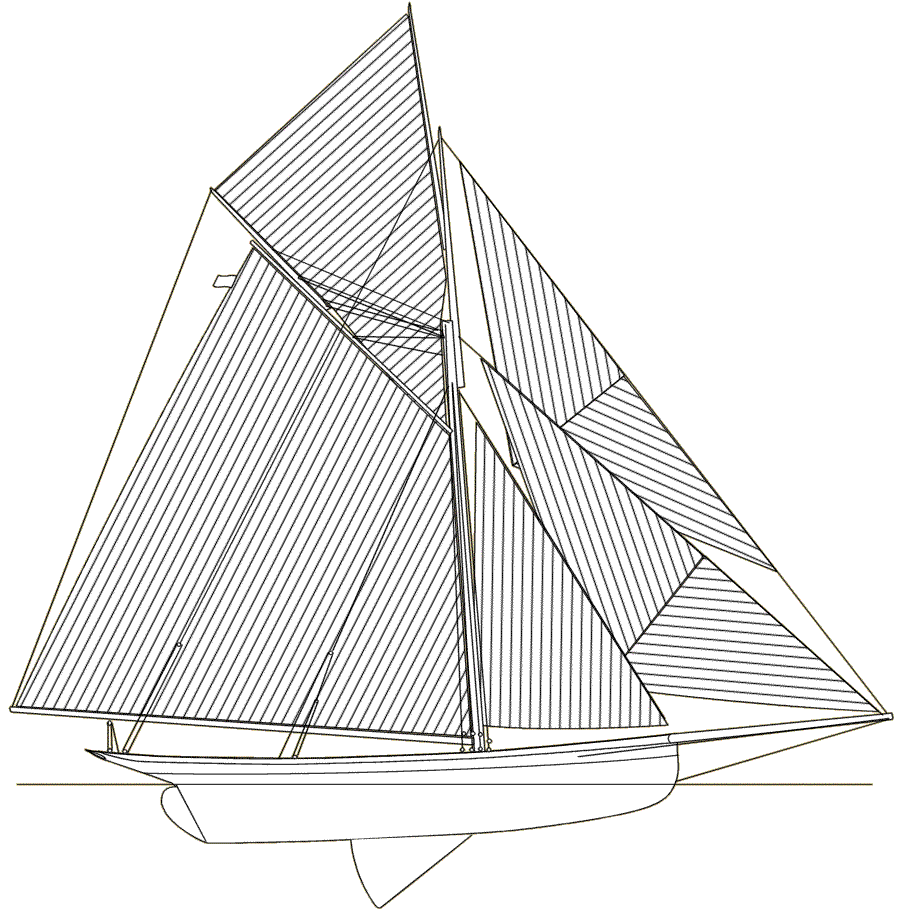Yves GARY Hits: 8574
Category: MAYFLOWER
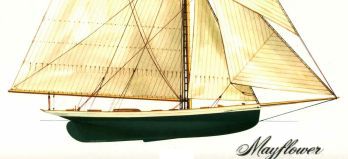 In anticipation of Galatea's coming, Boston yachtsmen immediately “got busy” after the 1885 race, with a view to holding the laurels they had won. General Paine, one of the Puritan syndicate, feeling sure that Puritan could be improved upon, which feeling was shared by the yacht's designer, placed an order with Edward Burgess for a new sloop, somewhat larger than Puritan, of which he was to be the sole owner.
In anticipation of Galatea's coming, Boston yachtsmen immediately “got busy” after the 1885 race, with a view to holding the laurels they had won. General Paine, one of the Puritan syndicate, feeling sure that Puritan could be improved upon, which feeling was shared by the yacht's designer, placed an order with Edward Burgess for a new sloop, somewhat larger than Puritan, of which he was to be the sole owner.
From an unknown local designer, with a dingy back office up three flights of stairs (it was said that Burgess and his brother set up in business in 1883 with a drawing board, a T square and a few drawing instruments), Burgess at once took rank among the foremost naval architects of this country and his name was known from coast to coast and throughout the yachting world of Europe. The credit that he received was well merited, for he not only had originality but also the courage of his convictions. He had thrown traditions to the winds to take what he considered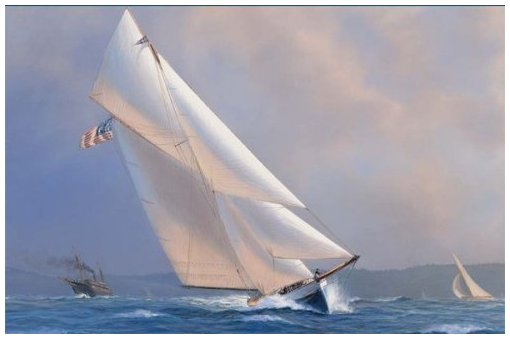 best in yacht design, no matter where it came from — which was no easy thing to do when nearly the whole country was convinced of the superior merits of the purely American type of shallow, flat, inside ballasted boats.
best in yacht design, no matter where it came from — which was no easy thing to do when nearly the whole country was convinced of the superior merits of the purely American type of shallow, flat, inside ballasted boats.
The advent of Puritan and of her successor, Mayflower, with their deeper hulls, outside lead ballast, overhanging sterns, and modified cutter rig, resulted in a great change in yacht design and brought about a vastly improved type of boat — abler, more seaworthy, and faster, except perhaps under certain conditions, than the older type of skimming dish.
Edward Burgess got to work at once, many of General Paine's ideas being embodied in the plans. Mr. Burgess frankly said at the time: "It is only fair to General Paine to state that the principal changes made in the new sloop, which cause her to differ from the Puritan, were made under his direction. They are the outcome of his ideas, and, if she comes up to what is expected. General Paine should have all the credit."
The new sloop was built at George Lawley's yard at City Point that winter and was launched on May 6th, being christened Mayflower. She was the biggest sloop in this country, her dimensions being: Length over all, 100 feet; waterline, 85 feet; beam, 23 feet; draft, 9 feet 9 inches (with centerboard down 20 feet). It is said that her sail area was 8500 square feet and she had 37 tons of lead on her keel and 11 tons inside to hold it up. Mr. Burgess had said that stability was one of the points he aimed at developing in the Puritan, and in that respect she was a great success. She was not, however, so easy in a head sea as could be wished, and this defect he tried to remedy in the Mayflower, In this particular he was quite successful. The Mayflower was a much better boat in a head sea, her forebody being longer and her entrance, of course, being finer.
|
|
|||||||||||||||||||||||||||||||||||||||||||||||||||
 The general appearance of the Mayflower is not unlike that of the Puritan. In many particulars, however, there is a wide difference between them. The frames, forty-nine in number, are all double, except the seven forward and three after cants, and are of oak, as are also the chain-plate frames, which extend in one piece from keel to gunwale. All the frames are mortised into the side of the keel, and those in the wake of the centre-board are dovetailed and keved.
The general appearance of the Mayflower is not unlike that of the Puritan. In many particulars, however, there is a wide difference between them. The frames, forty-nine in number, are all double, except the seven forward and three after cants, and are of oak, as are also the chain-plate frames, which extend in one piece from keel to gunwale. All the frames are mortised into the side of the keel, and those in the wake of the centre-board are dovetailed and keved.
The keel is made of two oak logs, each being originally sixty feet long and twenty-three inches square. The stern-post is attached to the keel by a knee, to which it is bolted. The centre-board well is cut in the keel, twenty-three feet long and five inches wide. The oak keel is about sixty-eight feet long, and is in its widest part, along the centre-board slot, forty-six inches on top and forty inches on the bottom. The lead keel originally weighed thirty-seven tons, but this weight was increased subsequently. It was run in three moulds, to conform to the oak keel, the forward piece being about fourteen feet long, the middle one about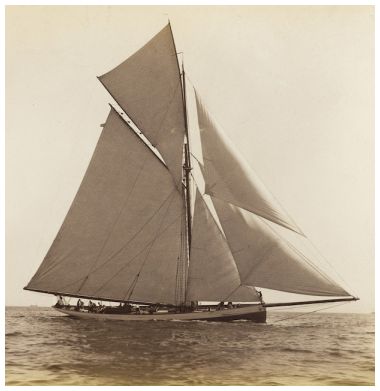 twenty-three feet long, and the after piece about twenty feet long. Along the centre-board box this enormous mass of lead measures forty inches wide at the top, and sixteen inches at the lowest part. It is attached to the oak keel by heavy bolts of bellow metal. The stem and the stern-post are of the best white oak. The latter has a rake of four feet and three inches in nine feet and eight inches.
twenty-three feet long, and the after piece about twenty feet long. Along the centre-board box this enormous mass of lead measures forty inches wide at the top, and sixteen inches at the lowest part. It is attached to the oak keel by heavy bolts of bellow metal. The stem and the stern-post are of the best white oak. The latter has a rake of four feet and three inches in nine feet and eight inches.
The centre-board is twenty-two feet long, ten feet deep, and four inches thick. Its lower courses are of oak, and its upper ones of hard pine. Several hundred pounds of lead in the top serve to sink it easily. There are twelve iron floor timbers, — six forward and six aft of the centre-board box, which weigh about two tons, and serve as ballast as well as to strengthen the vessel. The deck beams are of hackmatack, 6x5 inches. The deck is laid in the best white pine. The bulwarks are also of white pine, the rail of oak, and the stringers of yellow pine. The chain-plates are of iron, six in number, three on each side of the vessel.
The main saloon is fifteen feet long, and of nearly the same beam as the yacht, the trimmings being of mahogany. There is an after state-room, seven feet long, with two berths; on the starboard side, forward of the main saloon, a large state-room, with modern conveniences, and on the port side, forward, several small state-rooms for the officers. The galley and forecastle are conveniently furnished and well lighted and ventilated.
Plan of Mayflower created with DELFTSHIP
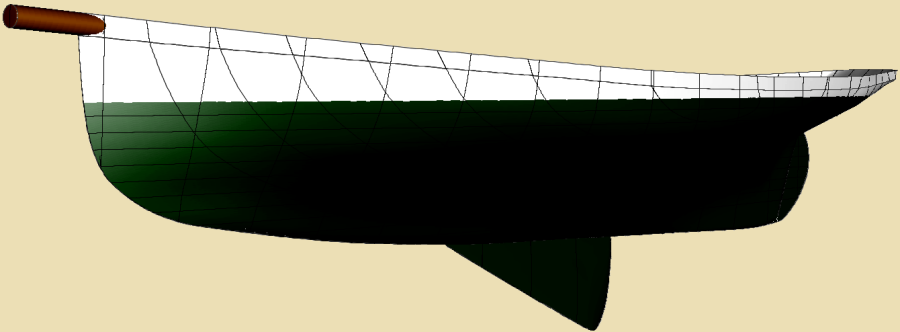
Download the MODEL FOR DELFTSHIP : Hull only
Download the MODEL FOR DELFTSHIP : Full model
